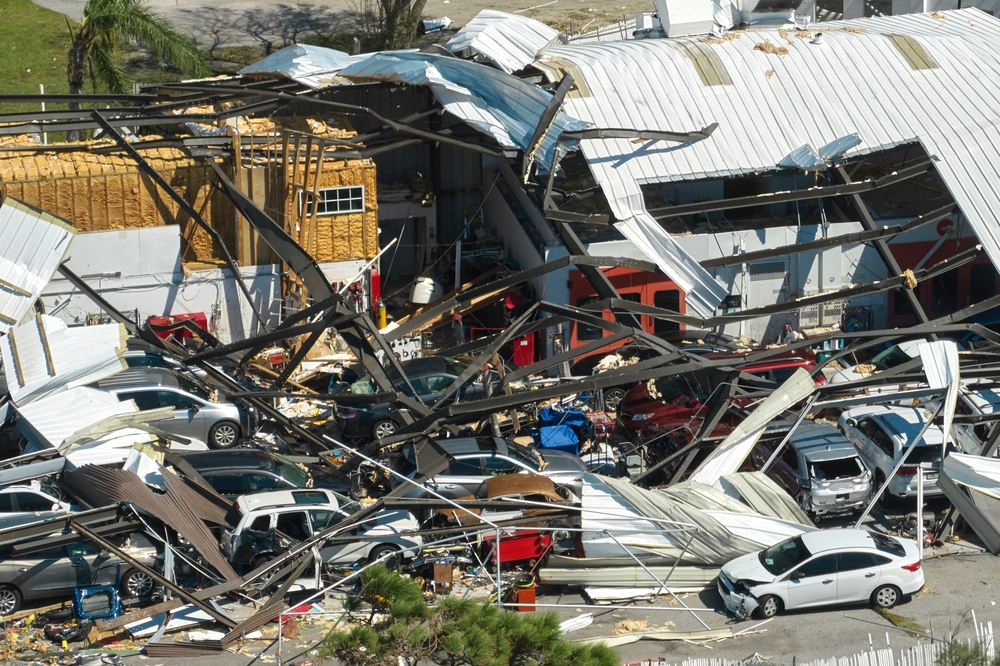Design/Construction Standards and Building Codes Evolving to Address Climate Change

By Andrew Mendelson, FAIA
Executive Vice President, Chief Risk Management and CX Officer
Berkley Construction Professional, a Berkley Company
October 26, 2023
Climate change is already having a significant impact on the design and construction industry and this impact is only going to grow in the years to come. Extreme weather events such as hurricanes, floods, wildfires and tornadoes are becoming more frequent and severe and buildings and infrastructure are increasingly being damaged or destroyed.
In response to these challenges, building codes and construction standards are changing to address climate and extreme weather concerns. Local, State and Federal agencies are also working to update design and building requirements, a meaningful factor in the evolution of the standard of care for professionals in the industry.
Changes to building codes and construction standards
One of the most significant changes is an increasing focus on resiliency. Resilient buildings are designed to withstand extreme weather events and quickly regain functionality when damaged.
- Higher wind load requirements: Buildings in areas prone to hurricanes and other high-wind events are compelled to withstand higher wind speeds.
- Flood-resistant design: Buildings in flood zones are required to be elevated above the floodplain and to have flood-resistant materials and construction methods.
- Wildfire-resistant design: Buildings in areas prone to wildfires are required to utilize fire-resistant materials and to create site features such as defensible perimeters and flame-resistant plantings.
For example, according to Smartcitiesdive.com, Kauai County in Hawaii was recently recognized as one of the first in the U.S. to base construction regulations on projected sea-level rise. The county partnered with University of Hawaii scientists to utilize model projections for flood hazards and sea-level rise for the year 2100 to guide the community’s regulatory framework for development. The resulting ordinance requires any new or substantially renovated buildings in certain areas to be elevated to withstand the 2100 projections.
In addition to these specific changes, building codes are also becoming more comprehensive and integrated to promote resiliency., taking a holistic approach to building and site development. This involves considering the cumulative impact of various factors, such as climate change, energy efficiency and sustainability. Today design professionals are expected to be knowledgeable about the science and impact of climate change, promote the adoption of enhanced project requirements to their clients (project owners), and adapt their practice to these updated standard of care factors.
Cities are also working to change design and building processes to address climate change, including:
- Updating zoning ordinances: Cities are updating their zoning ordinances to promote climate-resilient development. For example, some cities are requiring new buildings to be built in certain areas that are less vulnerable to flooding and storm surges.
- Investing in green infrastructure: Cities are investing in green infrastructure such as rain gardens, green roofs, natural landscape areas and permeable pavement to help reduce stormwater runoff and flooding.
- Creating incentives for climate-resilient construction: Cities are creating incentives, such as tax breaks or other financial incentives, for builders and developers to construct climate-resilient buildings.
The design and construction industry faces a significant challenge as climate change affects the natural and built environment. But this challenge can also be an opportunity to design and construct buildings that can withstand extreme weather conditions by leveraging the latest science and climate-change data to promote more effective solutions. To meet the evolving standard of care for the industry, architects and engineers must keep up with the latest trends, local jurisdiction codes and resilient design best practices. Both design professionals and contractors have a role to advocate for resilient design and to resist construction changes that would compromise the project’s intended resiliency. This will help to create safer communities that are better equipped to cope with the impacts of extreme weather events.
For additional information, read our risk management resource: “Evolution of the Standard of Care Due to Climate Change”
Additional resources on this topic include:
National Institute of Building Sciences
Federal Emergency Management Agency
About the Author
 Andrew Mendelson, FAIA, is an acknowledged design and construction industry leader in risk management and contracts. He joined Berkley Design Professional in 2013 after a 35-year career as a licensed architect and A&E firm principal. Andy directs Berkley Alliance Managers’ client experience (CX) initiatives as well as oversees efforts to provide leading-edge, risk and practice management resources, tools and training.
Andrew Mendelson, FAIA, is an acknowledged design and construction industry leader in risk management and contracts. He joined Berkley Design Professional in 2013 after a 35-year career as a licensed architect and A&E firm principal. Andy directs Berkley Alliance Managers’ client experience (CX) initiatives as well as oversees efforts to provide leading-edge, risk and practice management resources, tools and training.
Andy has a diverse background of practice, project, financial, operations and risk management experience, particularly in the large firm A&E environment. He advanced the development and publishing of industry-standard contracts through leadership of and engagement with the American Institute of Architects (AIA) Documents Committee and the Large Firm Round Table Legal Committee over a 15-year period. Currently, he serves on the American Council of Engineering Companies (ACEC) Risk Management Committee and as an advisor to the Legal Counsel Forum.
Andy holds a Bachelor of Science degree in Architectural Studies from the University of Illinois and a business management certification from the Kellogg School of Management of Northwestern University. Andy is based in Chicago, Illinois. Contact Andy at [email protected]